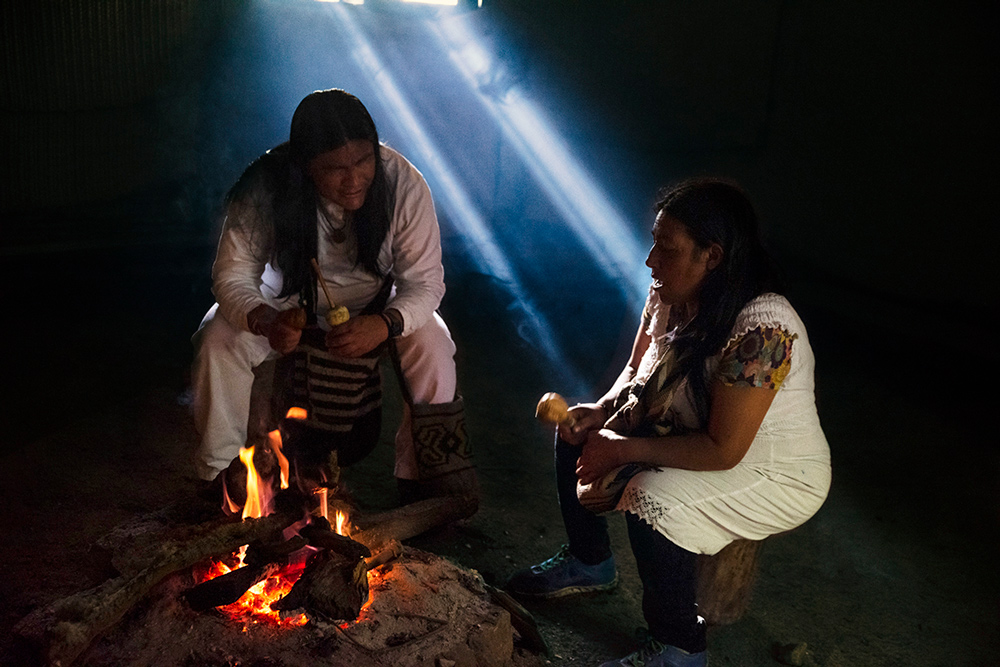Along El Dorado Legend Route, the very first contact with the Muisca universe is provided
by its own protagonists: indigenous communities. The Muiscas built a unique and fully
sensitive relationship with nature:
“They worshiped and respected nature: water sources, stones, mountains,trees, and
lagoons (considered as places to purify, reflect, pray and as offering altars). Within the
cosmic order they honored the sun and the moon, the rainbow and the lightning, just as in
the terrestrial order alongside the elements and Gaia with her four codes (animal, vegetal,
mineral, and human)"
Mariana Escribano (Researcher and Literature, History and Semiology PhD).
Muiscas life pondered around the gods, ancestors and, of course, the land. The offerings
and oblations were fundamental ceremonial aspects, in which they sought keeping
universal balance. It is probable that Muiscas conferred a special sense to the facts of
walking, going step by step and searching a way as an outline of life. Therefore, rituals or
ceremonies like “Correr la tierra” were means for self-finding, expressing gratitude to the
gods and presenting worldly success.
This ritual´s dynamic consisted on an indigenous walk around five different worshiping
spots located far way one from the other. The first one was Lake Guatavita where the
formerly caciques were crowned. It continued with Lake Guasca or Martos which was
sacked to disappearance. Then, the third one was Lake Siecha, nearby Bogota, whose
tour was done by Bacatá cacique and his personal guard. At fourth, Lake Teusacá, that
had treasures (golden caimans, santillos and jewelry). Finally, their last venerating place
was Lake Ubaque or Carriega, known for taking so many greedy lives away.
The night before “Correr la tierra” chicha or facua (sacred drink made of corn) used to be
drunk. Along the tour, that could actually last up to 20 days, burials and competitions were
done to first reach the highest venerated summits. It was such an effort and hardness that
a lot of indigenous died in the way, either drowned, fatigued or fallen out way down the
cliffs.
After the competition, the deceased were honored like heroes. During the latest days, the
caciques gathered together to burn the turpentine day and night. The practice ended up
with an offering: decorated rafts full of gold, and in the middle of music and fire, they
headed towards Lake Guatavita´s core, where such items were totally sunk.
Another outstanding aspect from Muisca community was their ability to craft precious
metals and ceramic, weave cotton blankets with singular prints, and be cognizant of
ancestral medicine. The ancient settlers were expert traders, they exploited the salt (as
scared and traded element) whose main use was to exchange goods and services.
Some practices, customs, ceremonies and healings come to life today along the territory
inhabited by indigenous ancestors centuries ago. The Muisca legacy as warm and
peaceful people who cultivated mind and soul still remains and stays alive among their
sacred places such as Guatavita, Iguaque, Fúquene, Tota y Sogamoso. El Dorado Legend
Route is your chance to connect with Colombia´s heart and the origins of what we are.
Unmissable!

